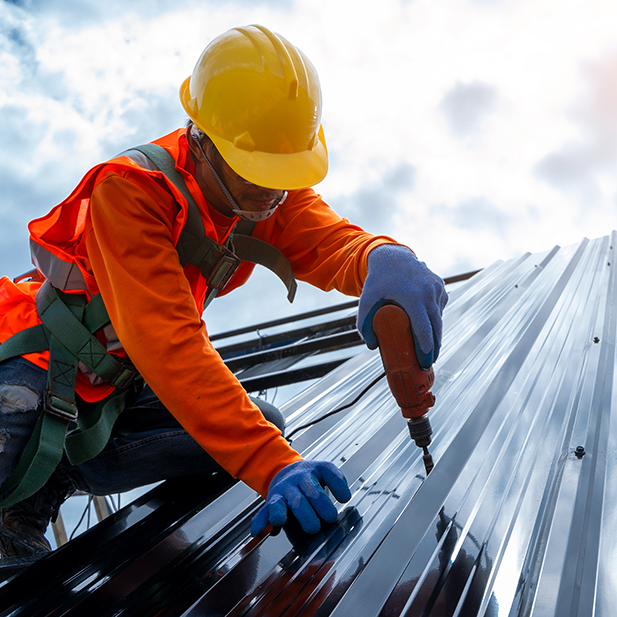Metal Roofing: An Ideal Choice for Commercial Buildings

Metal roofing has emerged as a standout option in the commercial roofing landscape of the United States. Known for its durability, versatility, and aesthetic appeal, metal roofing caters to a wide range of commercial buildings. The initial investment in a metal roof is balanced by its long-term benefits, making it an excellent choice for businesses looking for a reliable, cost-effective, and environmentally friendly roofing solution.
Description and Key Features
Metal roofing systems are characterized by their use of metal panels or tiles. They stand out for their longevity, resistance to extreme weather conditions, and minimal maintenance requirements. Metal roofs can vary in style, from traditional corrugated tin roofs to modern, sleek designs, making them suitable for various architectural styles.
Composition
The composition of metal roofs primarily involves metals like steel, aluminum, copper, or zinc. These materials are often coated with a protective layer of zinc or a combination of zinc and aluminum to prevent rust and corrosion. Finishes can include paint or special coatings for added durability and color variety.
Benefits
One of the primary benefits of metal roofing is its exceptional durability. Metal roofs can withstand high winds, heavy rain, snow, and even fire. They are also energy-efficient, reflecting solar radiant heat, which can reduce cooling costs. Their lightweight nature often means they can be installed over existing roofs, making them a versatile retrofit option.
Climate Considerations
Metal roofing is highly adaptable to various climates. In hot, sunny regions, its reflective properties keep buildings cooler. In areas prone to heavy snowfall, metal roofs shed snow easily, preventing accumulation. However, in coastal areas, consideration should be given to the type of metal used to avoid corrosion from saltwater.
Building Design and Purpose
Metal roofs are not just for industrial buildings; they are increasingly being used in office buildings, schools, and retail establishments due to their modern appearance and functional benefits. Their adaptability allows them to be designed in ways that complement both traditional and contemporary architectural styles.
Advantages and Disadvantages
Advantages of metal roofing include longevity (lasting up to 50 years or more), energy efficiency, and minimal maintenance. On the downside, the initial cost can be higher than other roofing materials, and during rain or hail, metal roofs can be noisier than other types of roofing unless properly insulated.
Cost and Longevity
While the upfront cost of metal roofing is higher, its longevity and low maintenance requirements provide a high return on investment. The lifespan of a metal roof can be two to three times longer than traditional roofing materials like asphalt shingles.
Popular Suppliers: Metal Sales and Fabral
Metal Sales is a leading manufacturer in the metal roofing industry, known for its wide range of products suitable for various commercial applications. Their products are recognized for their quality, durability, and the extensive selection of finishes and colors.
Fabral Metal Wall and Roof Systems is another key player, offering a broad spectrum of metal roofing solutions. Fabral is particularly noted for its innovative designs and commitment to sustainability, with products that are both energy-efficient and aesthetically pleasing.
Maintenance Requirements
Maintenance of metal roofs is relatively simple and involves regular inspections, cleaning to remove debris, and checking for signs of wear or damage, such as scratches or dents. While metal roofs are resistant to many environmental factors, it's important to promptly address any issues to maintain their integrity and appearance.
